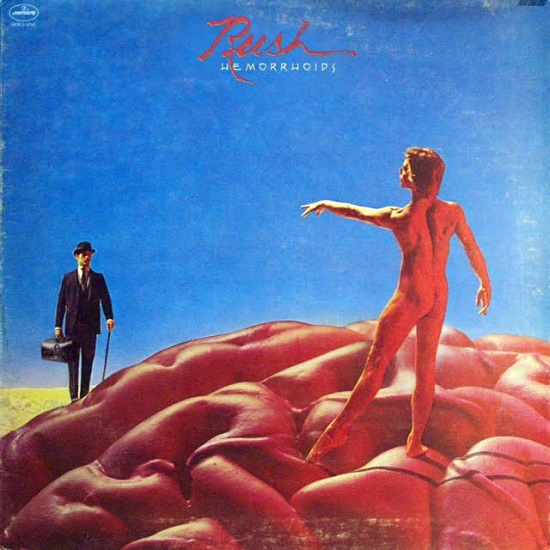All album sleeve art reinterpretations by Sean Reynard
Let’s look at this dialectically. There’s an itch. And there’s also temporary relief offered by a spiral scratch. Yet the scratch will cause the return of a deeper, more persistent itch. Let’s consider both the needle and the damage done to my wallet. It’s an addiction undoubtedly. And like any addiction, the stakes get raised by every hit taken. The fix you need gets bigger and bigger; the pit you dig gets deeper and deeper. Keep on striding down the vinyl staircase. Where will it end? What will the cost be? Is this the end; my flexible friend? What depths in record buying misery have we plumbed this month? Whether we’ve got to the bottom of the vinyl staircase or not, it looks like the ‘new’ old frontier in record collecting this month could just be flexi discs.
And why not? Because this is where it actually started for me. The flexi disc was my ground zero. By talking about my first ever record in terms of an LP I’ve essentially been lying to myself and everyone else for decades about this. In the past when people asked me what my first record was, I always told them that it was Adam And The Ants’ Kings Of The Wild Frontier LP. However to be honest before that I also had a Buena Vista Star Wars 7” EP – a 24-page read along book and record, which came out in 1979 (“SEE the pictures HEAR the story READ the book”). But if I’m being 100% truthful with myself, I need to go even further back to the beginning of that year, when I was seven years old. The first piece of recorded audio that I had was a flexi disc given to me by an aunty. The double-sided square of plastic contained recordings of the song of the humpback whale and was given away with the January 1979 issue of National Geographic. With a production run of 10.5 million copies, my first ever record was from the largest single press run at that point in history. I listened to it for a few times and then, bored, melted a hole through it with a magnifying glass and one of the sun’s rays. It was my first ever record. (Because I wasn’t one of those lucky souls who had a Fisher Price turntable.)
I’ve been thinking about flexi discs a lot this month and not even particularly from a retro-fetishistic point of view. I was lucky enough to be at Le Guess Who? in Utrecht last week and SunnO))), who were there curating several stages, had just got their fine new LP, Kannon back from the pressing plant so I managed to get hold of one of the first 2,000 copies that had the bonus disc. ‘Aokigahara//Jukai’ is a handsome floppy 7”x7” square of white, finely-etched plastic, with a title that refers to two Japanese forests. It might not immediately seem like the ideal format for a band who value things such as depth, volume and texture in their music but it was chosen specifically to match the disintegrating nature of the composition.
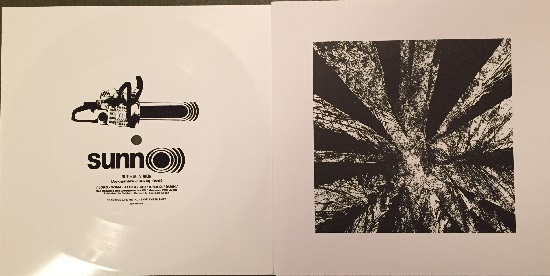
Stephen O’Malley of SunnO))) explained to me: “The flexi ended up sounding a lot better than we expected but the track and the format were put together for a reason. We rarely put out music in the short, 7” format for obvious reasons but this time it worked really well, and it makes a [great] counterpoint/appendix to Kannon (it isn’t available independently of the album).”
The track features the usual trio of O’Malley, Greg Anderson and Atilla Csihar as well as Randall Dunn, Tad Doyle playing “crude and brutal” chainsaw solos and an “Indian chopper played through Ampeg stacks” by Burning Witch dude, B.R.A.D.
When faced with the chainsaw and chopper solos, combined with the forest names and the legend on the flexi: “PRACTICE LIFE METAL: SAVE THE PLANET”, it doesn’t take a genius to work out SunnO))) are actually searching for the green note this time out. This, weirdly enough, makes the six-minute-long track more of a spiritual cousin of Coldcut/ Hexstatic’s ‘Timber’ than the abrasive opening salvo from Venom’s Black Metal – both tracks feature prominent use of the tree-felling power tool repurposed as a musical instrument.

And a few weeks prior to this, when Italians Do It Better mainstay, Johnny Jewel’s new album The Other Side Of Midnight arrived at my flat courtesy of il postino, there was reason enough to celebrate, it being a sumptuous and warm slice of atmospheric synthesizer ambiance on clear/blood dripping vinyl with lovely packaging. But the fact it came with a grab bag of goodies made it something else again. Aside from the slipmat and large newspaper style posters it arrived with, there were three picture flexi-discs that really caught the eye. I mean, when was the last time you saw a picture flexi right? Let alone three in a series. (The first of the discs, ‘Tell Me’ is a co-write between Signor Jewel and Marty Rev of Suicide and features the Irish actress Saoirse Úna Ronan on vocals and is an excerpt from the Lost River soundtrack; the second is a Chromatics single called, ‘I Can Never Be Myself When You’re Around’; and an alternate drumless mix of ‘Into The Black by the same band. All three are limited to 3000 copies.)
Sensing there was something in the air I recently talked to friend of tQ, DJ, producer and collector, Kevin Foakes aka Strictly Kev who has an interest in the trashy and often overlooked format.
I put it to him that some people reading the feature, who are still on the right side of 30, might not even know what flexi discs are…
Skyping from in front of a wall full of framed original 2000AD art, he said: “I presume so yeah. Originally they were used as inserts for magazines. The main people who made them in the States were Eva-tone from 1962 onwards. They would turn up in M.A.D. magazine featuring silly songs, stupid stories, comedy sketches… There was one M.A.D. flexi disc, ‘It’s A Super-Spectacular Day’ which is a song with eight different endings because it’s got eight different parallel grooves. It’s mad… literally.”
When I asked him if the disc was collectable he laughed: “I don’t think any flexi discs are collectable because they were so cheap and produced in their hundreds of thousands to put into magazines. The collectable flexis are the ones you get now because they have a run of just a few hundred, so it’s a niche market. The trouble with flexis is they’re so expensive (to make) and yet they’re so shit. They’re lovely objects but they’re so disposable and they’re such bad quality. Probably people make flexis because they remember them from when they were young – they definitely don’t make them because of the fidelity. One of the main selling points about the vinyl revival is selling people this idea of superior audio. There is obviously no superior audio with flexi discs.”
He was of course right. In 1982 I remember coveting my mate’s older brother’s copy of the Joy Division ‘Komakino’ flexi and going as far as nearly stealing it off him because I wanted it so badly. As an adult I put off looking for it for years because I always presumed it would be way out of my price range, only to end up buying one off eBay for £6 about two years ago. FAC28 bore the slogan: “This soundsheet should not have cost you anything wherever or however it was obtained”.
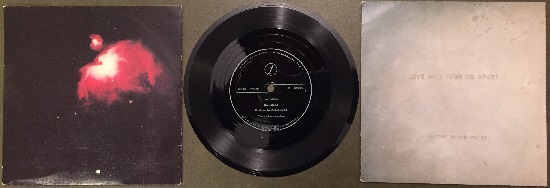
Kev laid out where his interest with the format stemmed from: “My first one came with Flexi Pop magazine, which was an edgier Smash Hits with Kris Needs writing for it. It featured Adam And The Ants doing ‘A.N.T.S.’ – you know, their cover version of ‘Y.M.C.A.’ by The Village People, the song they used to do as a live encore.”
Fast forward to today and his love of these disposable discs has led to him staging the Flexhibition, which is on at the Horse Hospital, this Saturday night, Decebmer 5. He’s going to be handing out flexis from his own collection to those who come down early and will be discussing the format with The Real Tuesday Weld’s Stephen Coates, who shares his interest and recently published the book X-Ray Audio on Strange Attractor about the phenomenon of Soviet bootleg vinyl being pressed on old x-ray plates.
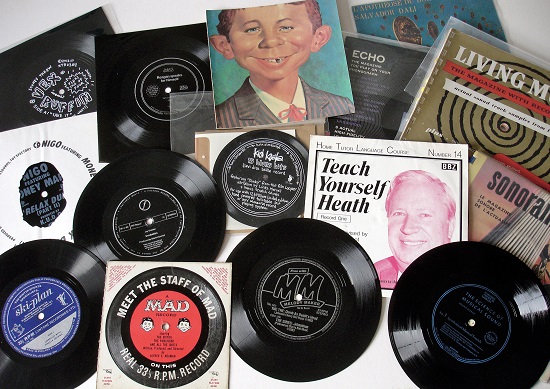
Talking about his collection and what he’s on the lookout for he concluded: “I’m always after anything that’s odd. I’ve got flexis of things like Kenny Everett advertising Pepsi. The best examples of the format are the discs that came with art books or comics. Raw was a big format magazine which came out in the 1980s in the States. Issue Four in 1982 came with a flexi that contained a really early cut-up montage of Ronald Reagan (‘Ronald Reagan Speaks For Himself’). They used a bunch of his speeches to make him say things he hadn’t actually said. So like Cassetteboy but decades earlier. It was like what The Tape Beatles and Negativland would go on to do. Jon Moore from Coldcut sent me a flexi of William Burroughs doing a reading. My favourite one is quite new actually, it’s a demo for the new Roland TR909 drum machine. They got Schooly D to remake ‘P.S.K. What Does It Mean?’ on the 909 and put it on two flexis, one clear, one orange, inside a book all about the drum machine. Kid Koala did one a couple of years ago which is a 5” flexi, a little scratch disc with it’s own pop out, make your own turntable that Ninja did. It’s the most bizarre thing ever but I doubt anyone ever made the turntable despite the fact that it would have worked.”
Before he signed off, I asked him if there were any formats left to be resurrected and his answer chilled my soul: “Yeah, three inch CDs. Because the CD revival is going to happen next and the things that always get overlooked are these tiny discs because they’re so small and always at the back of drawers in record shops.”
We talk about Spiritualized’s Ladies And Gentlemen We Are Floating In Space BP which was released as a box of pills with each track being a separate 3” CD contained under foil in an outsized pharma tray… and I feel the floor giving way under my feet, like I’ve just hoofed a fat slug of ket up my nozzle. No matter how far you go down the staircase, you never reach the lowest level… it just keeps on going down and down and all you can do is to keep on descending because you are compelled to do so.
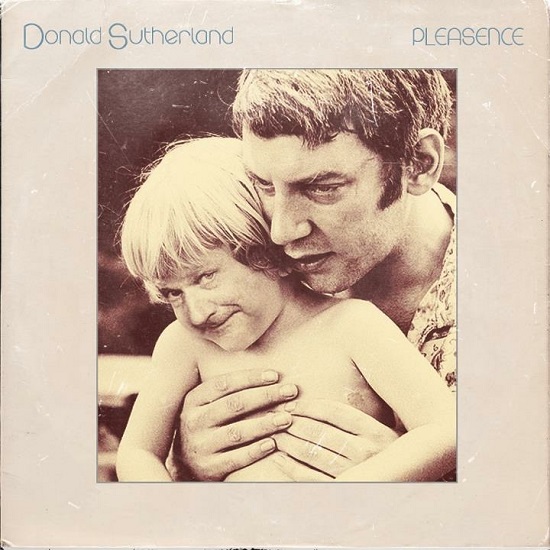
BOXSET OF THE MONTH: Simple Minds – The Vinyl Collection (79, 84)
Universal
Picture the pet dog you had while growing up. You loved that dog. From its arrival as a puppy, scampering everywhere at your feet, jumping up into your lap every time you sat down, licking your face and panting with enjoyment just to be in your presence. Long summer days in the park, teaching it to sit, stay and run, fetching balls and sticks, learning new tricks. Your constant companion through infancy, childhood and teendom. Imagine if you only had those good memories. Imagine that you were able to forget the events of that terrible day when you took him out for a walk on the fields at the back of your house while the council was trimming the tall hedges. Imagine you never had to remember your faithful friend, his eyesight now failing with age, running up to the municipal gardening vehicle and jumping straight into the mercilessly rotating blades of the huge hedge trimming attachment. Imagine being able to forget witnessing the animal you loved, instantly rendered to jets of spraying claret and flying slabs of charcuterie (which then slid warmly down your face and chest as you screamed out loud). Imagine you could erase the memory of his thick femur bone breaking one of the mower’s blades, which then span off through the air like God’s throwing dagger, embedding straight into OAP Mrs Menton’s forehead. Imagine you hadn’t seen your poor dog’s ribs shooting out of the mowing machine like rounds of hot lead from a pillbox tommy gun, perforating the face and brain of a traffic warden who was dead before he hit the floor. Imagine no longer being able to smell the acrid, poisonous odour of melting council gardener flesh, as the whole vehicle went up in a fireball. Imagine not having to remember the two weeks it took you to scrub the stench of carnage out of your clothes and hair. Imagine being able to forget the horror and just remember the pure untainted love.
Changing the subject entirely, Simple Minds have just reissued their first seven albums as a vinyl box set, from Life In A Day to Sparkle In The Rain inclusive, stopping just before the release of the ‘Don’t You Forget About Me’ 7". It is perfect in every respect. You should buy it immediately.

The high watermark of all human endeavour?
INTERVIEW ON THE STAIRCASE: Michael Rother, Hans-Joachim Roedelius and Dieter Moebius of Harmonia
Recently Grönland have seen fit to release a near-as-damnit complete works of Harmonia box set, featuring Musik Von Harmonia, Deluxe, the Tracks And Traces Brian Eno collaboration/compilation across a double LP, Live In 1974 and the previously unreleased Documents 1975 not to mention a beautiful book of photographs, also containing sleeve notes by Geeta Dayal. Like with the Simple Minds box, there isn’t much to say other than the fact this is near essential music from one of the key Krautrock groups. If you haven’t heard this stuff before then I envy you your maiden voyage. It only remains for me to say that it all looks and sounds great, especially the previously unreleased Documents 1975 which contains a couple of punchy, dynamic and cosmic high quality live recordings from two separate gigs in Hamburg as well as ‘Proto Deluxe’ and ‘Tiki Taka’ both recorded live at the band’s studio in Forst.
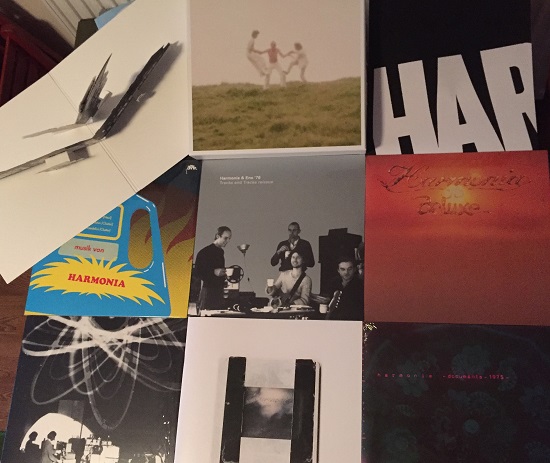
However there is one aspect to this fearsome box which perhaps should have been abandoned at the drawing board stage which is the mystifying pop-up cardboard diorama of the Forst studio. It looks like an expensive afterthought, which I’m guessing it probably was; the music and book alone are easily worth the money here. Any vinyl-related pop-up design feature is always going to beg comparison to Pete Fowler’s amazing design work for the Super Furry Animal’s inner gatefold spread on Songbook Vol 1, and come up lacking no doubt. However as grumbles go, this is incredibly minor.
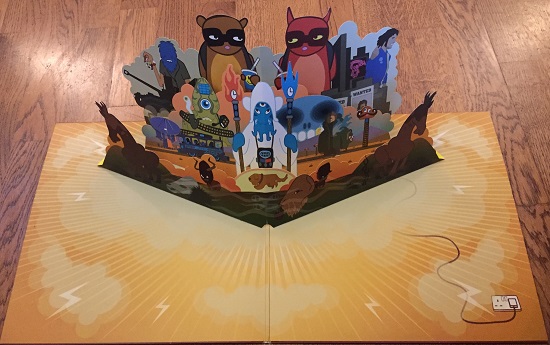
So instead of wasting precious time and space patronising you, I thought I’d dig out an interview I did with Michael Rother, Hans-Joachim Roedelius and the now sadly departed Dieter Moebius back in 2007, the year before this website started, when they were releasing the excellent Live In 1974 for the first time…
The album captures the excellent performance which took place at a converted railway building called the Penny Station. For Rother, the venue was already familiar as he had already played there two years earlier with Kraftwerk. “The first Kraftwerk album was released in 1970 and when I joined them this album was starting to become quite a big success,” he recalls. “People were crazy about ‘Ruckzuck’. I remember Conny Plank saying that on the heavy drug scene in Munich they listened to Kraftwerk all the time. Everyone was on drugs apart from us guys.”
Harmonia were conceived in 1973, while Rother was on a hiatus from Neu! and visiting the kosmische duo Cluster at their studio in Forst. He liked it so much he ended up moving in with them.
Rother has good memories of this period and the night of the live album particularly: “It was a very small, very fine club which was an old railway station, situated in a very nice area, 40 kilometres away from Forst. We were invited to play even though we weren’t nearly as popular as Kraftwerk. By the way, I remember we had a really good night there as Kraftwerk as well, so there must have been a special atmosphere, a special magic about the place because, to my way of thinking, it was also the best Harmonia gig we ever played. We were more or less sitting at the same level as the 50 or 60 people who were there. It wasn’t a big venue but maybe that is part of the intimacy, part of the magic of the place.”
He says that during this period he “fell in love” with the music of Harmonia and that he considered it to be his main project. He recalls his Farfisa beat box, saying: “They were designed to be like metronomes for practice or for people playing dance music, like when elderly people get together for a tea dance. You know, um cha-cha um cha. Um cha-cha um cha. That was fun, doing the equalising and doing the filtering and adding delay and putting it through a wah wah pedal and other machines to chop up those rhythms to make them sound more interesting… Mine was very simple, it had pre-programmed beats but you could put several of those on top of each other and do several variations, but you have to use good manipulations to make them sound good.”
This said, eventually he was forced to admit that obviously the record-buying public at large seemed to be oblivious to the charms of albums like Musik Von Harmonia and Deluxe: “We were ignored to a greater extent than even Neu! I remember that many people were very confused by what we were doing live… it led to the end of Harmonia in 1976. I was completely convinced that Harmonia would be a great success because I loved it so much and I expected other people to be the same.”
His Harmonia band mates, Hans-Joachim Roedelius and Dieter Moebius from Cluster, also have fond memories of the Live In 1974 show. Roedelius says: “It was a fun gig. It was a very small place, probably only fitting about 50 or 60 people. It was hot in the room. Anyway, it was one of the first gigs we did touring as Harmonia. We tried to revitalise the tracks that we designed in our little studio in Forst and, as you can hear, it worked out that way. They are very long pieces, very long tracks. They almost seem to not start or end in a way.”
Cluster had moved to Forst some years earlier to escape the harsh city living of Berlin and the constant nomadic drift they slipped into after that. The effect on their sound was immediate and profound according to Roedelius: “It made a great difference, because the noise of the big city and the noise of travelling around for years… when Cluster left Berlin in 1969 we travelled around for almost three years before settling down in Forst, so it changed my life totally.” However, this is immediately dismissed by Moebius: “The change wasn’t necessary to the music. It was just coincidental.”
Cluster became frustrated by the public’s indifference to their music at the time, and saw the potential for them to grow by forming a group with Rother who had already been in Neu! and Kraftwerk. At first the partnership proved very fruitful according to Roedelius: “This music was more or less taken from live recordings made in our place in Forst and some not very well elaborated stuff, so this was not really music we could repeat. The first emotion of coming together with Michael Rother is an example of how really enthusiastic we were to be together in a group.” The pair, who came from a very experimental background, grew increasingly bored with Rother’s insistence on daily practice and plain hated the idea of having a ‘set’ of songs in the first place rather than coming up with new compositions anyway. Roedelius, in fact, claims that Deluxe is actually a Rother solo record, with Cluster as guest musicians: “He was such a well focused musician and was already successful through his work with Neu! and Kraftwerk. So he said, why not try to do something in that direction? We did try, but the reason it did not work was we were not always able to play the same music again live, we were not able to rehearse all the time, it was not our aim to do that, so we just gave up and concentrated on our Cluster work.”
He finishes up by saying that despite the fact that all of the so-called Krautrock groups did not really sound like one another, there was a strand linking all of them and that was the zeitgeist. He concludes: “There was a similar spirit. We were all children of the time. We were all part of the so-called flower-power generation. We all worked in the same mood. Most of us worked in communities. Most of us tried to live a healthy life. It split afterwards, when the others like Tangerine Dream and Kraftwerk got really famous. Then it became something else, but in the beginning at point zero, there was the same spirit.” Talking of which, the pair laugh when they recall playing as part of Kraftwerk at a festival. Roedelius concludes: “We were all jamming together on stage. We had all of our equipment set up together. It was fun and it sounded very loud, but I don’t think it was so nice for the audience!”
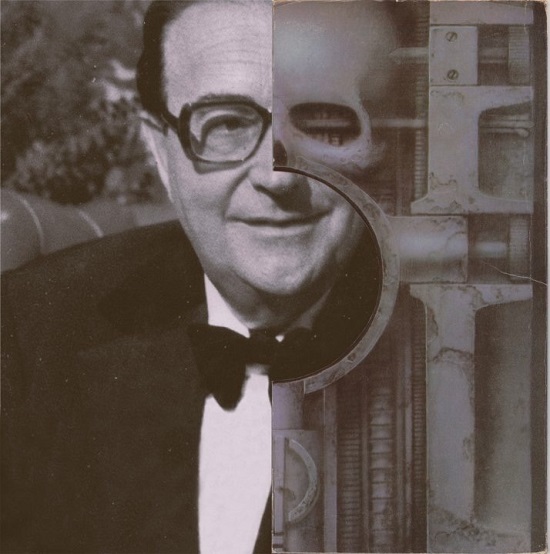
BACK CATALOGUE REISSUES OF THE MONTH: Peter Gabriel – The First Four Albums
For a while Peter Gabriel was the first among equals when it came to the serious business of big unit-shifting, mainstream pop stars indulging in radical sonic studio innovation. So it shouldn’t come as a surprise to learn that he’s still not settling for the obvious, well-trodden path, even when it comes to reissues. These reissues – the first four self-titled solo albums plus the two German language versions (but not the Plays Live LP for some reason) – have been remastered at half-speed and cut to two laquers for 45 RPM playback, capturing a very large dynamic range.
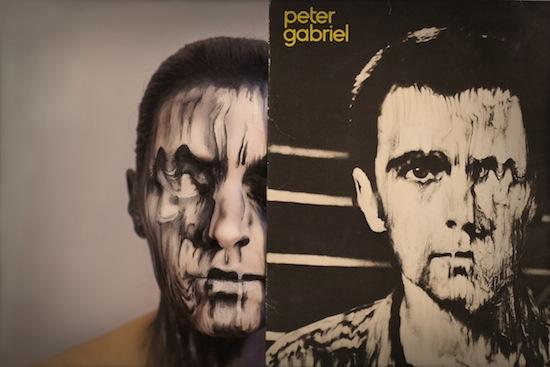
Natalie Sharp melts herself down
Now, at this point of the review, as always, I feel I should mention that you can obviously – and I mean, completely obviously – buy perfectly decent and serviceable second hand copies of these albums for a few groats each in either your local second hand record emporium or on Discogs or eBay. And more to the point, if you’re listening to music on a "Retro Style briefcase turntable" or a Crosley with built in speakers or an insanely overpriced and reconditioned Dansette, there is literally no point in buying new [holds breath, crosses both fingers behind back, stands on one leg facing magnetic north, while counting from ten to one backwards] "audiophile" vinyl, as whatever you play will sound like a post-apocalyptic short wave broadcast from the bottom of a well picked up on a home made Tandy crystal radio set during a typhoon. (I guess in some cases there are people who may be buying the records because they want the 24 bit "high resolution download" and have no plans for the actual vinyl other than to leave it on a shelf looking pretty, and, well, it’s their money and it’s probably none of my business even if it literally wears me out and makes me want to kill thinking about shit like this.) Of course, on the other hand, if you have a half decent stereo, this method of remastering actually does make a difference, especially if your old copies, like mine, were bought for the equivalent of 50p each from a record store just off Las Ramblas, Barcelona. Trust me, they will sound a lot better indeed.
Now, I’ve just checked my bank balance and if I were to forgo some of my preparations for Christmas I could afford to purchase one of these fine LPs. And if I had a gun to my head, the one I’d buy would be Peter Gabriel aka Three aka Melt, released in 1980 with its world beating Hipgnosis cover. Now, at the time the album was probably more lauded for ‘Biko’ its closing anthem (and live favourite) dedicated to the South African anti-apartheid protester, Steve Biko, who was murdered in custody in September 1977. Or if not, it was better known for the anti-war hit single ‘Games Without Frontiers’. But its opening salvo ‘Intruder’ is far more interesting in my book and not really the work of someone you’d accuse of being politically correct or a hand-wringing liberal either.
The track boasts the first notable, foregrounded use of gated drum reverb – the production effect that would loom over the 80s. (It had been used previously on an XTC track by producer Hugh Padgham, but only really as a colouring agent – the rhythms on ‘Intruder’ sound like you’re sat a foot away from Optimus Prime playing drums at full power.) Padgham (and Steve Lillywhite) added the gated reverb effect to the drums on ‘Intruder’ and Gabriel got excited by the new production method. He composed a special drum track for his old Genesis pal Phil Collins who was playing on the session and asked him to take all of the metal, including hi-hat, off his kit. (The drummer then kept on going to hit cymbals that were no longer there so Gabriel ordered him to add extra toms to his kit, thus amplifying the effect of the weird new sound.)
Of course, as every pub bore knows, after the sessions, later the same year, Collins started work on what would be his debut solo album, Face Value and applied the technique to ‘In The Air Tonight’ and the rest is what passes for history.
The thing is however ‘Intruder’ and ‘In The Air Tonight’ have little in common. ‘Intruder’ is a viciously transgressive song about someone with a cross dressing fetish breaking into a house for thrills, possibly even with rape on their mind. Collins’ song might be cold but it’s still very mundanely domestic and resigned; the true heirs to Gabriel’s berserk, holistic, unpleasant innovation/vision are more likely to be found on Public Image Limited’s Flowers Of Romance or the Butthole Surfers’ Rembrandt Pussy Horse.
The further away you get from a decade, the less surprising the great stylistic leaps forward tend to sound in retrospect – even the ones you lived through first hand. You can actually be left contemplating a production continuum that cuts across genres in the most haphazard way. I was listening to the radio the other day when, delightfully, ’24 Hour Party People’ by the Happy Mondays came on. However it suddenly hit me, what the track sounded like. Not like acid house. Not, particularly, like Can. Not like James Brown. Definitely not like Funkadelic or any of the other things that are often claimed of them. What it does actually sound like is Duran Duran or Japan, albeit a version of the group worse off for downing three or four slabs of Stella where the singer has accidentally fallen off a building and is bellowing for help from the bottom of a ditch.
It’s just how the 1980s sounded.
ONE HITTERS AND WALLET BUSTERS
Ian William Craig – A Cradle For The Wanting
(Recital)
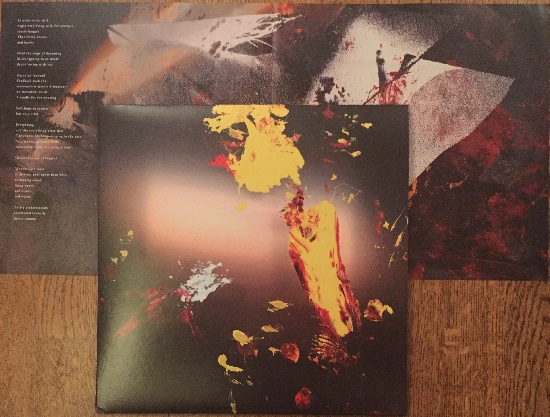
I have a good friend who says you should never trust anyone with two Christian names like George Michael or Paul Simon; but where does that leave me with Ian William Craig I wonder? Trustworthy or not, the little I know about IWC is that he’s based in Canada and his primary instruments are the human voice (mainly his own) and a series of reel to reel tape decks; the latter being used to manipulate the sound of the former creating a sound with echoes of Philip Jeck, William Basinski and Leyland Kirby. Anyway, I include Ian William Craig’s new album A Cradle For The Wanting here not just because it’s superb – it is – but as reminder to myself that end of year lists are idiotic. I spent weeks fretting over 2014’s EOY lists and literally within 24 hours of publishing the album chart last December, I heard IWC’s last album A Turn Of Breath for the first time and realised immediately that in any sane world it should have been in our top twenty. I’ve just finished compiling this year’s top 100 albums list to be published on Thursday and no doubt exactly the same thing will happen this year.
Circuit Des Yeux – Over Due & In Plain Speech
(Thrill Jockey)
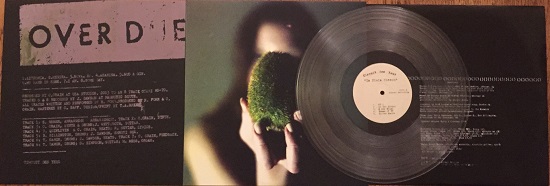
After Richard Dawson, Circuit Des Yeux is easily the best live act I’ve seen this year. Stumbling into their show at the Paradox in Tilburg at Incubate festival this autumn was like being inducted into some weird, intoxicating musical cult. At once unlike anything else going on in music today there were still faint echoes and traces of Robbie Basho, Fairport, Anthony Hegarty, Nico, Stara Rzeka and Patti Smith. But the second and third gigs (Cafe Oto and Le Guess Who? respectively) showed that Haley Fohr’s sublime project is evolving at a rate that suggests that 2016 or 2017 really could be the year that a whole bunch of people sit up and take notice. Her live shows are much further out than she has tended to go on record so far but plotting a course forward from 2013’s Over Due and this year’s In Plain Speech, make me desperate to hear where she’s going next.
Selvhenter – Selvhenter 10" EP & Motions Of Large Bodies LP
(Eget Vaerelse)

Selvhenter! Selvhenter! Selvhenter! Selvhenter! Selvhenter! Selvhenter! Selvhenter! Selvhenter! Selvhenter! Selvhenter! Selvhenter! Selvhenter! Selvhenter! Selvhenter! Selvhenter! Selvhenter! Selvhenter! Selvhenter! Selvhenter! Selvhenter! Selvhenter! Selvhenter! Selvhenter! Selvhenter! Selvhenter! Selvhenter! Selvhenter! Selvhenter! Selvhenter! Selvhenter! Selvhenter! Selvhenter!
In December’s Vinyl Staircase: reporting from the world’s largest record fair in Utrecht, Fela Kuti and Gary Numan reissues

